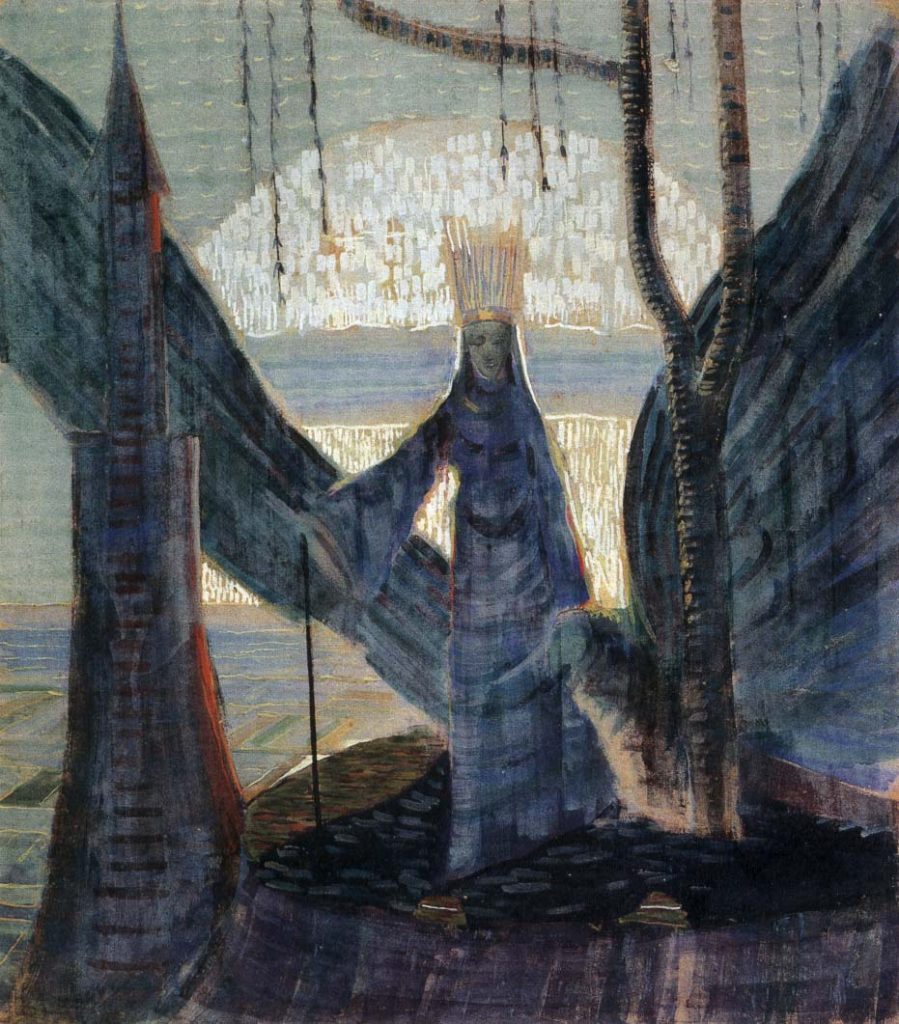
From the 8th to the 10th October 2019, GIS Religions: pratiques, textes, pouvoirs (“Scientific Interest Group, Religions: Practices, Texts, Powers”) organised a conference in Lyon focusing on the theme of “tradition”, a key concept in past and present understandings of, and debates about, religion and religious practices. Within this large conference, two panels focused on the theme of “magic”, and its relationship to tradition. Organised by Nicole Belayche (EPHE, PSL / AnHiMA) and Thomas Galoppin (ERC MAP Toulouse, ERASME / associé AnHiMA), the first panel was centered on the questions of the transmission of ritual knowledge, and how this served to establish or claim authority, while the second explored the themes of materiality and innovation.
The first paper, by Florian Audureau (Paris Diderot) focused on the Greek magical papyrus known as PGM XIII, a large codex from the fourth-century CE containing a complex series of rituals for invoking a divine apparition, as well as several shorter recipes for other purposes. Three of its recipes are in fact multiple copies of a single text, the Eighth Book of Moses, which, despite its predominantly Egyptian content, claims the Hebrew prophet Moses as its author, even going so far to assert that Hermes Trismegistos plagiarised this work in his own writings! Audureau’s discussion focused on part of the ritual in which the practitioner is instructed to chant the seven Greek vowels in a complex sequence in several different directions – North, South, East, and West, to the Earth, to the lower air, and to the upper air. Within the history of the scholarship of ancient magic, there has been a tendency to associate these seven vowels with the seven planets of Hellenistic astrology, yet, as Audureau demonstrated, this papyrus, and the other Graeco-Egyptian magical texts, often show little interest in the planets other than the sun and moon. He suggested another explanation which might have existed alongside the planetary hypothesis, a “pneumatic” interpretation, according to which the vowels might serve as a way of “writing” the act of breathing, which would link the ritual to a creation myth which accompanies it, in which the creator god brings the world into existence through pronouncing sounds.
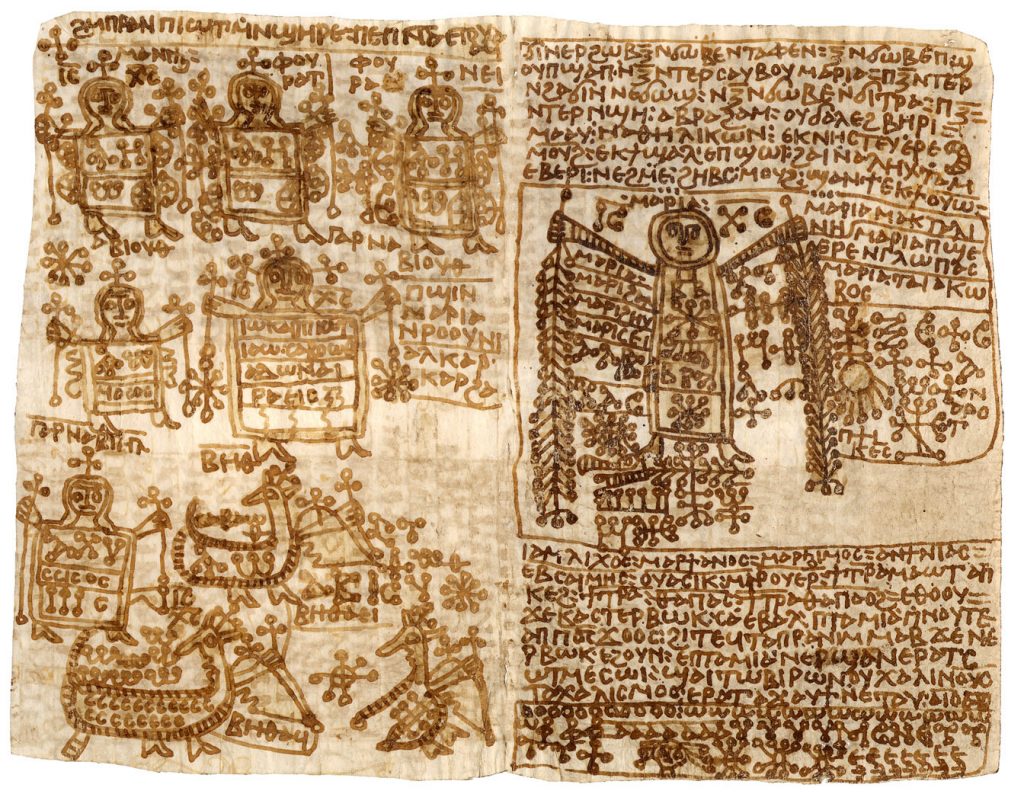
The second paper, by Korshi Dosoo of the Coptic Magical Papyri project, looked at the relationship between what we commonly think of as tradition – the process by which knowledge and power from a mythic or sacred past is transferred over time to the present – contrasts with the claim often found in “magical” texts to direct access to the divine realm through special ritual knowledge. He began with the fourth-century Mithras Liturgy, a text which promises the possibility of mystical ascent to see the sun god. The “framing narrative” with which it begins discusses how its ritual was transmitted by an angel, existing in an oral form before being written, and finally copied in a manuscript from Roman Egypt. At the same time, however, a later part of the text claims that the god himself changed the ritual after it had first been written, demonstrating that “magical” revelation might allow ritual knowledge to bypass the normal necessity of temporal transmission. This same process can be found in several magical texts from Christian Egypt, which draw upon the liturgical rituals of the orthodox church, while supplementing them with special knowledge which claims to be the result of revelation, and which manifests in the forms of complex descriptions of the divine realm including the secret names of divine beings.
The third talk, by Emma Abate (IRHT-CNRS), turned to look at texts from the Jewish tradition, written in Hebrew and Aramaic, and dating from Late Antiquity to the Middle Ages. These texts, primarily amulets for favour, healing, and protection, often use what Abate termed historiolae, that is, allusions or short recountings of stories from the Biblical or Talmudic which parallel the present moment. These references to a mythic antecedent serve to validate and reinforce the efficacy of a magical rite, but, at the same time, they often seem to alter the story they retell, or even create a new tradition. Thus, magic bowls against demons may be phrased as divorce texts, using the authority of legal formula to force a demon to leave a house, and even situating themselves in the courts of particular rabbinic authorities of the past. In a similar manner, prayers for favour may call upon the example of Noah or Jacob, who received divine blessings. But some texts may skip these references, simply formulating claims that their wearer has received favour in the same way that other texts discuss Noah or Jacob. In this way, they essentially seem to rewrite the present as if it was the mythic past, bringing into question our concept of tradition as something that moves from past to present, and demonstrating that Jewish magic was an “open tradition”.
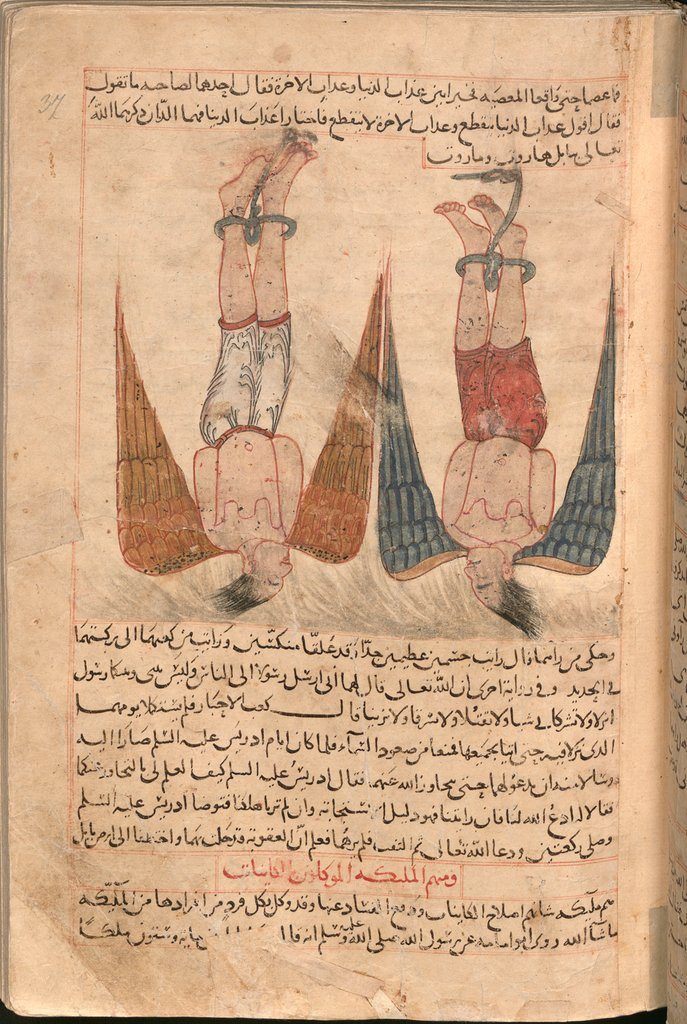
Jean-Charles Coulon (IRHT-CNRS) presented the final paper of this session, looking at magic from the perspective of Arabic literary texts from the Middle Ages, focusing in particular on the discursive creation of the concept of “magic” (siḥr). In the foundational text of Islam, the Qur’an, “magic” is said to have been taught by two rebellious angels, Harut and Marut, who, as a result, have been punished ever since by hanging upside down under the mountain of Babylon. The diversity in later understandings of magic is demonstrated by the disagreement among authors about where this mountain was – in the famous Babylon in modern Iraq, in another site of the same name in Iran, which authors claimed had become a pilgrimage site for magicians, or in the Egyptian city of Babylon, near Old Cairo. As in Christianity and Judaism, Coulon demonstrated that “magic” was a contentious concept, with theological understandings stressing that it was something evil and deceptive, while certain philosophers argued that it might be a form of licit knowledge of secret things. Arabic-language texts on Arabic normally claimed that they contained pre-Islamic “pagan” knowledge, with figures such as the Greek philosopher, Apollonius of Tyana, known in Arabic as Balinus, being popularly attributed many magical texts. At the same time, this “magical tradition” could also be described in such a way as to make it seem more legitimate; some “magic squares” are attributed to Āṣaf b. Barakhiyā, the vizier of King Solomon of Israel, but are said to have been transmitted to the later Muslim Sufis via the intermediary of the Greek philosophers.
The first paper of the second session was by Julien Véronèse (Orléans/POLEN), a specialist on medieval Latin magic. The medieval Latin magical tradition appears in writing around the 12th century, although many of its manuscripts are later, from the 15th century onwards. Many of these texts were translations of older Greek or Arabic material, and the complexity of their transmission history demonstrates that these texts, like many of those discussed in the previous panel, constituted open traditions, which could be the subject of continuous innovation. One common type of text within this tradition is known as the Ars notoria, the “Art of Notes”, a series of rituals aimed at invoking the angels to improve one’s knowledge and memory, and to master the various sciences; these texts, of which the earliest surviving copies are from the thirteenth century, were probably used by members of the clergy and students, who might seek magical shortcuts to learning complex concepts. As this text developed, Véronèse showed that later copies demonstrated an increase in the complexities of the magical names they contained, as well as in their rituals, which might incorporate new procedures, such as the consecration of magical figures, drawn from other texts such as the Clavicula Solomonis (“Key of Solomon”), and might be printed alongside extensive notes, based on the format used in university texts. At the same time, clerical attitudes to magic changed over time; before the 15th century magic was considered as a superstition, whereas afterwards it was increasingly considered to be a dangerous heresy which involved pacts with demons. For this reason, texts were increasingly “Christianised”, with non-Christian elements (which might come from their original Muslim contexts) removed, and magical figures being replaced with more “orthodox” illustrations of divine figures such as Mary and Jesus.
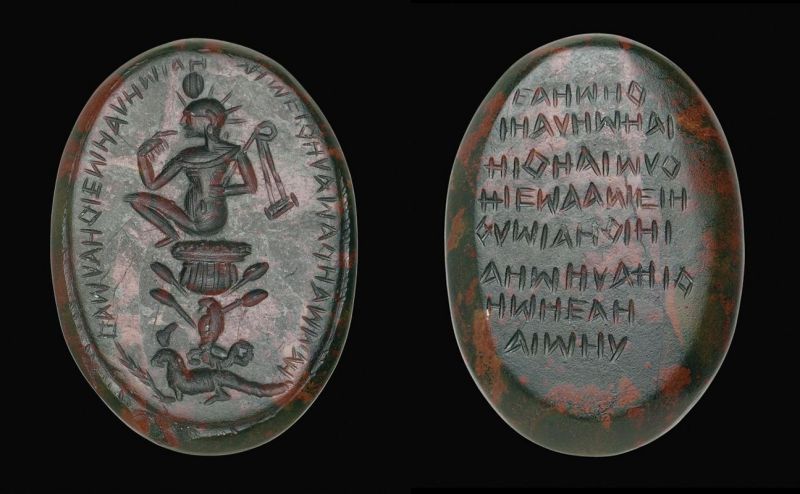
Images © Courtesy Christie’s Images | Christie’s 2008.
One of the two organisers, Thomas Galoppin (ERC MAP Toulouse, ERASME / associé AnHiMA) presented the next paper, which returned to the world of Graeco-Egyptian magic to look at the large range of magical gems which have been found all around the ancient mediterranean, and which predominantly date to the first four centuries CE. Galoppin’s approach focused on the way in the images served ritual functions – with reducing triangles, for example, serving to remove illness, or the lion-headed serpent Khnoumis, a decan from Egyptian astrology, being carved on stones to prevent stomach-aches; the appearance of such stones with images of Khnoubis in places as far-flung as Switzerland demonstrates the intercultural transmission of these objects. His main example focused on a gem which contained an image of the young sun-god Harpocrates seated on a lotus which was itself placed on a falcon-headed crocodile, the whole thing surrounded by an ouroboros. Falcon-headed crocodiles may seem very strange to us, but they were often used in Graeco-Roman Egypt to depict the solar aspects of the god Sobek, worshipped in particular in the Faiyum oasis. As Galoppin demonstrated, this group of images seems to echo a description found in PGM XIII, the same manuscript discussed by Audureau. Its texts describes how the name of the creator god could be “written” through images, a falcon-headed crocodile, a serpent biting its own tail (an ouroboros), and a nine-formed god. This “image” is also described as making sounds – the crocodile the clicking sound called poppusmos in Greek, and the serpent the hissing sound known as the surigmos, both of which were believed to ward off evil. Galoppin suggested that it was this concept that the magical gem depicted – the crocodile, the serpent, and the nine-formed god represented by Harpocrates; a way of writing the name of the creator god, simultaneously an image and a series of sounds.
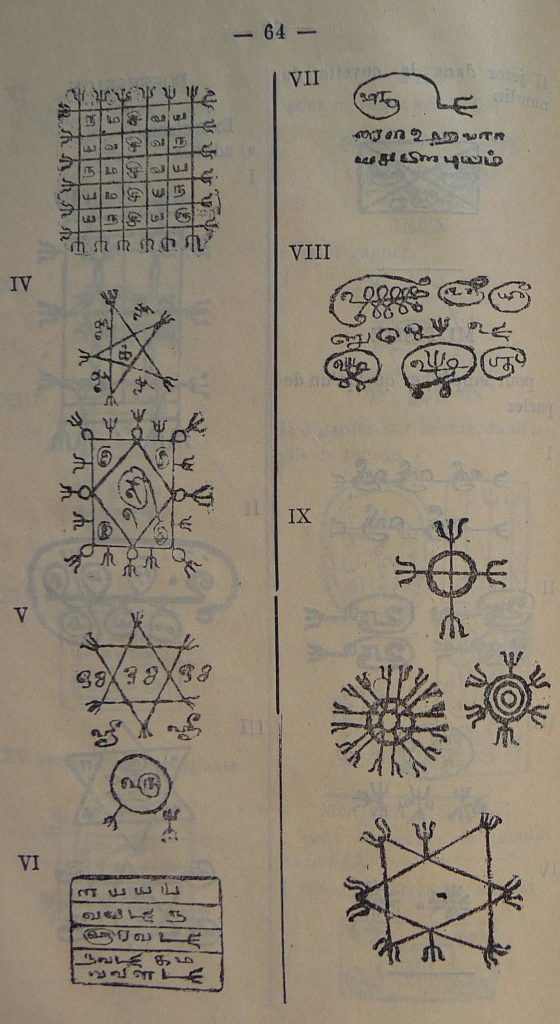
Image from P. Mariadassou, Médecine traditionnelle de l’Inde. La magie noire, Pondichéry : Imprimerie Sainte Anne, 1937, p. 64, provided by Alexis Avdeeff.
The final two talks were by anthropologists rather than historians, allowing us to consider how reflection on directly observed ritual practices might richen our understanding of ancient practices. Alexis Avdeeff (Université de Poitiers) was the first of these anthropologists, and his work focused on Tamil Nadu in the south of India, and the relationship between astrology and magic in everyday life. In his paper, Avdeeff looked at some Tamil astrologers who are also well-versed in “magical formulae” called mantiram in Tamil (from Sanskrit mantra) and showed that while astrological theory does not explicitly mention witchcraft in its interpretative developments, each astrologer has their own method for detecting and counteracting a possible sorcerous attack. When it comes to counter-attacking, the mantiravāti (or māntirīkar), the specialist of magical formulae, experiences his calling as an intervention by the deity with whom he has a special relationship; usually the Goddess or one of her close servants. Very often, astrologers are also mantiravāti, as was the case in the study presented by Avdeeff.
Within the predominant causal system of Indian astrology, the identification of a problem through the casting of a horoscope will usually be followed by ritual prescriptions aimed to appease the planetary deities. By contrast, the local “magical” system described by Avdeeff would instead use more focused rituals to solve the immediate problems; for example, if a woman had left her husband, the specialist might propose a ritual to make the woman come back, followed by a series of “love potions” which could be fed to her to ensure she did not leave again. Nonetheless, Avdeeff argued that the distinction between “magic” and “religion” which exists at least notionally within the Abrahamic religions (Judaism, Christianity, and Islam) does not really exist in Hinduism, so that both public and private practices to help or harm can be considered different forms of ritual addressed to the gods.
The final paper was by Ksenia Pimenova (FNRS, Brussels), an anthropologist who works in the Altai and Tuva Republics, two constituent parts of the Russian Federation. While both nations have been, to varying extents, the subject of Russian colonisation, their native peoples practice shamanism, and Pimenova’s work focuses on the shamans within these two contexts, and the ways in which practices have been affected by encounters with other cultural traditions. Pimenova described how there seem to be two main periods of syncretism – a deep and longstanding syncretism with aspects of Buddhism, and the more recent influence of Western culture, principally through New Age concepts such as energy healing and neo-shamanism. Siberian shamanism in these cultures is particularly open to innovation, and Pimenova described some of the key reasons why; shamanic practices lack any central dogma, and are transmitted orally, with very little formalisation. As in Graeco-Egyptian magic, direct inspiration, or communication from a spirit, is always capable of overturning tradition, and the Altai and Tuva cultures both value in their shamans what the anthropologist Charles Stepanoff calls “singularity”. That is, every shaman is believed to be unique, from the rituals they use to even their bodily make-up (shamans may have different bones and organs from normal humans and each other), so that innovation among shamans is expected. At the same time, the changes wrought by Russian colonisation and the Soviet era – previously nomadic groups being forced to settle and urbanise, and the anti-religious policy of the communist government – have made innovation necessary by disrupting cultural transmission. Against this background, the 1990s have seen a renewal of interest both in Buddhism, and in traditional shamanism, in the Altai and Tuva republics. Pimenova presented a few case studies, including one shaman who used extensive Buddhist imagery, such as a vajra (diamond or thunder) sceptre, so extensively that one client was confused about whether she had seen a shaman or a Buddhist lama. Another shaman, a woman originally from Russia who had trained under a Tuva shaman in the 1990s, brought with her practices, such as card reading, learned in her earlier life in Moscow and the United States. Still another shaman offered shamanic initiation rituals to tourists, but, since no initiation ritual existed in traditional Tuva shamanism, he drew upon the principles of Neo-Shamanism. Neo-shamanism is a New Age religious tradition developed in the United States, and is a result of a tradition in religious studies which understands shamanism not as a specifically Siberian phenomenon, but a more universal category of religious practice, and attempts to describe “core shamanic practices”. This shaman guided his clients with drumming through a shamanic journey in which they encountered spirit animals – practices alien to Tuva shamanism, but key elements of Neo-Shamanism. Against these tendencies towards innovation, there is an interesting counter-movement, particularly in the Tuva Republic, where a 1995 law classified shamanism as a traditional religion and attempted to define it by creating new hierarchical relationship between shamans, and shamanic religious organisations which could interact with the state. This change has led to shamans being criticised for not being traditional enough, with tradition often defined using the reports of western ethnographers.
All of these case studies show the fascinating ways in which the various practices often classified as “magic” – frequently understood in opposition to religion – are subject to the same tensions as other religious phenomena. On the one hand, they rely upon connections to a real or imagined past for power and authority, while on the other they must respond to the changing needs, desires, and judgements of the present day.
I would like to thank the participants for checking and correcting some of the summaries given here. Any mistakes which remain are my own.
